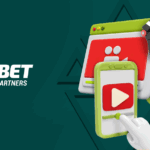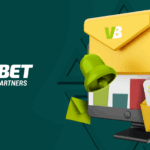Expert’s Guide to Facebook Affiliate Marketing: Tips and Strategies
18.04.2025
Expert’s Guide to Facebook Affiliate Marketing: Tips and Strategies
18.04.2025Affiliate marketing is one of the most accessible ways to generate income online. And when combined with Facebook — one of the largest advertising platforms in the world — it becomes a powerhouse for both beginners and seasoned marketers. Whether you’re just starting or looking to refine your approach, this guide will walk you through everything you need to know about affiliate marketing on Facebook.
Understanding Facebook Affiliate Marketing
Affiliate marketing in Facebook involves promoting third-party products or services and earning a commission for every sale, lead, or click generated through your referral. You don’t need to create your own products; instead, you earn money by being a bridge between the product and potential customers.
Facebook is an ideal platform for affiliate marketing because of its massive user base, highly detailed targeting options, and variety of ad formats. From organic posts to paid ads, the platform gives marketers tools to reach the right audience at the right time.
Commission Structures in Facebook Affiliate Marketing
Affiliate programs typically offer three types of commission structures:
- • Pay-per-sale (PPS). Earn a commission when someone buys a product through your affiliate link.
- • Pay-per-lead (PPL). Get paid when users sign up or fill out a form.
- • Pay-per-click (PPC). Earn money every time someone clicks on your link, regardless of further • action.
When choosing affiliate programs to promote on Facebook, consider the commission structure and how well it aligns with your audience and marketing style.
Why Choose the Vivatbet Betting Affiliate Program?
If you’re exploring different platforms for affiliate marketing on Facebook, the Vivatbet affiliate program is worth a look. It offers generous commission rates, timely payouts, and a user-friendly dashboard that makes tracking easy. What sets Vivatbet apart is its focus on high-converting offers and localized promotions — which means better engagement and higher earnings for affiliates. Whether you’re running organic posts or using Facebook Ads, Vivatbet gives you the tools and flexibility to scale your affiliate income.
If you’re diving into affiliate marketing on Facebook and looking for a program that actually works, let me save you some time — check out Vivatbet. I’ve tried a bunch of affiliate platforms, and Vivatbet is one of the few that ticks all the boxes: solid commission rates, easy-to-use interface, fast payouts, and most importantly offers that actually convert. They focus a lot on localized campaigns, which means your ads feel more relevant and perform better. Whether you’re running Facebook ads or just growing your page organically, Vivatbet gives you a great foundation to build on.
Tracking Affiliate Performance
One of the most important aspects of affiliate marketing is tracking performance. You need to know which posts or ads are converting and which aren’t. Some key tools to help you with this include:
- • Google Analytics. Monitor traffic sources and conversion paths.
- • Facebook Ads Manager. Track ad performance and optimize campaigns.
- • Affiliate Dashboards. Most networks provide detailed analytics on clicks, leads, and sales.
! Always use UTM parameters in your links to identify where your conversions are coming from.
Leveraging Facebook for Affiliate Marketing
Organic Reach vs. Paid Advertising
There are two main strategies for affiliate marketing on Facebook: organic promotion and paid advertising.
- 1. Create engaging content on your Facebook page, in groups, or on your personal profile. This includes product reviews, tips, or value-driven posts with affiliate links.
- 2. Use Facebook ads and affiliate marketing techniques to target specific demographics, interests, or behaviors.
Each has its pros and cons. Organic reach is free but slower. Paid ads are faster but require budget and testing.
Facebook Ads and Affiliate Marketing: A Strategic Match
Running affiliate marketing with Facebook ads requires strategy:
- 1. Choose a product with high conversion potential.
- 2. Build a landing page (many affiliate networks prohibit direct linking).
- 3. Use eye-catching visuals and copy.
- 4. Split-test audiences, creatives, and placements.
- 5. Monitor metrics like CTR, CPC, and ROI.
! Always check Facebook’s advertising policies. Some affiliate offers may not be allowed.
Creating Your Facebook Audience
Before you can succeed in affiliate marketing Facebook, you need to know who you’re targeting. Building the right audience is crucial.
How to Create Facebook Page for Affiliate Marketing
Having a dedicated Facebook page builds credibility and separates your personal life from your marketing activities. Here’s how:
- 1. Go to Facebook and click “Create Page.”
- 2. Choose a business or brand.
- 3. Add a name and description that clearly convey your niche.
- 4. Upload a professional profile picture and cover image.
- 5. Post valuable content before promoting anything.
! Treat your page like a brand. Use a consistent voice, visuals, and posting schedule.
Audience Targeting Tips
- • Use Lookalike Audiences to reach people similar to your existing followers.
- • Retarget users who engaged with your content but didn’t convert.
- • Start broad, then narrow based on performance.
Best Practices for Affiliate Marketing on Facebook
To increase your chances of success, follow these best practices:
1. Focus on Value, Not Just Sales
Don’t just drop links. Provide context, benefits, reviews, or personal experience. Help users understand why the product is useful.
2. Avoid Link Fatigue
Don’t overload your audience with affiliate links. Alternate with non-promotional content to keep engagement high.
3. Use Facebook Groups Strategically
Find niche groups relevant to your affiliate products. Participate genuinely before posting links. Some groups have strict rules, so always check first.
4. Comply with Disclosure Rules
Clearly mark affiliate links with terms like “#ad” or “affiliate link” It builds trust and ensures you’re legally compliant.
5. Test and Optimize
No campaign is perfect on the first try. Run A/B tests for your creatives, copy, audience, and timing.
6. Create Funnels
Use a simple funnel: Facebook post/ad → Landing page → Affiliate offer. This gives you more control over tracking and compliance.
7. Use Video Content
Video posts tend to have higher engagement. Create short clips explaining or reviewing the product.
! Include subtitles — many people watch videos without sound.
Final Word
Affiliate marketing in Facebook is a powerful way to monetize your content and audience, but it requires strategy, compliance, and consistency. By combining the organic potential of Facebook with the precision of paid ads, you can create a sustainable income stream that grows over time.
Whether you’re using Facebook ads and affiliate marketing or just starting to build a page, remember to test, track, and always put your audience first.
Start tracking your affiliate conversions in your marketing tools like Google Analytics, Google Ads, and Facebook Ads. This will help you identify what’s working, improve your ROI, and scale your efforts efficiently.
Recent posts

Using TikTok for Affiliate Marketing Without a Website
TikTok has evolved from a simple entertainment platform into a powerful marketing and income-generating tool. Today, more and more people are using it not only…

Using Video Content to Drive Affiliate Conversions
The modern user scans information quickly but stops at what comes to life on the screen. Video demonstrates the product in action, tells stories that…

Email Marketing for Affiliates: Is It Still Worth It in 2025?
Email marketing is one of the oldest digital communication channels, which many people have long considered obsolete. But the situation is different for affiliate marketing.…

